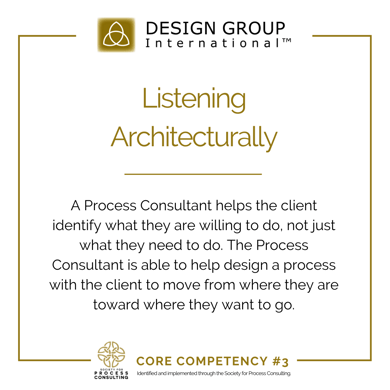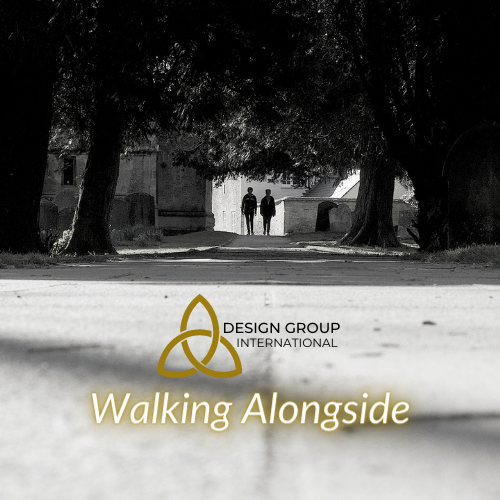Listening: Architectually
I can still hear Dr. Ong’s booming voice echoing in the small, dark classroom of the School of Music at the University of Louisville. “What is the significance of the C SHARP?!?” he asks again.
I was sitting in Music Theory III, and we are discussing Beethoven’s Symphony no. 3 in E flat major "Eroica." I looked down at my book, a portion of the score to the symphony printed in it, and looked back at Dr. Ong.
I had no idea. “It was a mistake?” I guessed. “No!” he exclaimed.
It was not unusual for Dr. Ong to ask questions that no one in the room had answers to, and he was the type of teacher who would just wait until someone answered correctly. Usually, we got out of it because I had a secret weapon.
I had my sister’s textbook.
My older sister, by exactly 18 months, had the pleasure of having Dr. Ong the year before and took amazing notes in the class—most of them in the very book that now sat on my desk. So when this would happen after an appropriate amount of silence, I would jump in with the answer and save the class or pass along the answer to one of my friends so Dr. Ong didn’t catch on.
This time, I look down again at the score—nothing about the C-sharp, how could there be nothing??
So we just had to sit there in silence until one of us figured it out.
I learned to listen, to deeply listen, when I became a musician. More than any other command yelled at me in band, choir, or orchestra over the years, “LISTEN!” was number one on the list.
We listened for our pitch and if it matched others. We listened for our own voice or instrument. Were we blending with the others when appropriate and finding our way to the forefront when appropriate? We listened for who had the melody, for the harmony, and for the rhythm. All the while having one eye on the music and one on the conductor.
When something wasn’t quite right, it was usually a result of us not listening. How’s that for a life lesson?
The third core competency of Process Consulting is Listening Architecturally. This builds from the first two ways of listening, where we listen to the client and for the client. When we listen architecturally, we listen with the client.

Here are a few highlights of the competency:
-
Encompasses all the Process Consulting questions of who, what, when, where, and how.
-
Shifts from right brain to left brain thinking
-
Identifies underlying issues
-
Gives context to which underlying issues will be addressed
-
Shows the readiness to engage and fosters alignment within the client organization
-
Leads to Action steps and accountability
All of that from listening with.
I’m sure you can see why I think of a symphony when I think about this competency. Or why this kind of listening is referred to as “architectural." This is the scaffolding on which the work will be done. These are the melodies, harmonies, and rhythms upon which the music will be built. Every piece, every note, is essential.
In the 7th measure of Beethoven’s Eroica Symphony, he places a c-sharp, and Dr. Ong wanted to know its significance. Now let me tell you Beethoven is everything you think he is and more. He was an absolute genius, but to a music student in her second year of college, I’m telling you, there is no reason, none whatsoever, for that c-sharp to be there. None. It makes no musical sense; the first listeners probably thought it was a mistake.
Except, Beethoven didn’t see it as a mistake, and so it happens again. And again. C-sharps all over the place.
My class all stared at our scores in silence until finally, Dr. Ong, disappointed in all of us, explained. The c-sharp that looks like a mistake was a clue. It was, in fact, the cornerstone of the whole symphony. It added depth and texture. It creates a feeling in the listener that something was unresolved, that there is more here, and keeps you listening with more depth. Finally, in the end, we all realize that the thing that felt wrong: out of place, a mistake, and turns it into the key to resolving the whole thing.
It’s genius.
How many times have you heard someone in a meeting that thought:
-
That person just isn’t “getting it.”
-
“That came out of nowhere!”
-
“What are they talking about?”
-
“Can’t we just move on? This is so uncomfortable.”
When these thoughts occur, what would it look like for you and your team to lean into the uncomfortable feeling and listen with each other without judgment but with genuine curiosity, like a member of an orchestra? Possibly asking some variation of:
-
What is the significance of this to the larger problem?
-
What does this say about the way they think?
-
What’s going on with the energy this comment creates?
-
How might this information be helpful to us as we move forward?
When we listen architecturally, we are really going to start getting somewhere, and sometimes, that brings what we can perceive as trouble.
Organizational change is hard, and anyone who says otherwise is trying to sell you something. It might get painful, or people may start acting out because disrupting the status quo is, at best, a little unnerving and, at worst, going to expose incompetence.
Yet, we should not shy away from the difficulty; we should listen for it repeatedly, seek to understand its significance, and not let it deter us from the forward movement because it just might be the key to resolving the whole thing.
If you’d like to know more about using listening to move you forward in your work, please feel free to e-mail me at shannonw@designgroupintl.com or you are welcome to schedule a time to talk. You don’t have to do this alone.
Keep up the good work; you’re doing great,

 Shannon Weston
Shannon Weston
Design Group International
Senior Consultant
To Dig Deeper:
Read: Think Again: The Power of Knowing What You Don’t Know by Adam Grant
Listen to: Brene Brown’s interview with Harvard Professor Dr. Sarah Lewis on Dare to Lead Podcast
Watch: The West Wing: Season 3 Episode 15, “Hartsfield Landing,” watch this scene: See the Whole Board.
The core competencies of process consulting have been developed and are taught by the Society for Process Consulting. If you are interested in receiving your credential in process consulting please visit our website.
March 1, 2023

Comments